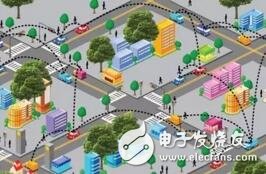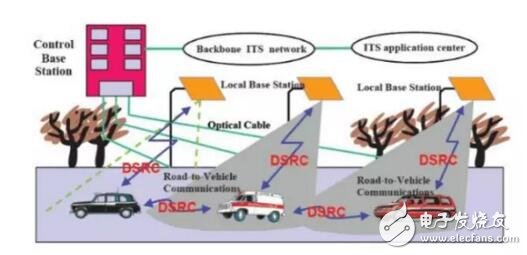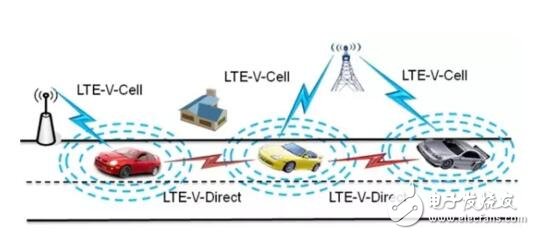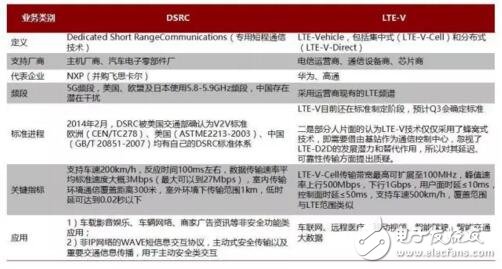A text to understand the "LTE-V" and intelligent network connection
Not long ago, the topic of intelligent network and "LTE-V" is nothing more than car networking and LTE-V. This article has deeply considered and summarized the seven major problems that are most concerned about the market.
1. Why is the market currently focusing on LTE-V?
The recent tipping of the Internet of Vehicles and LTE-V comes from two events:
1) “2016 Automotive and Information Communication Convergence Development Forum†was held in Beijing on July 19th. Wei Weizhen, Director of the Automobile Division of the Equipment Industry Department of the Ministry of Industry and Information Technology, discussed the ecological development of the automotive industry under the influence of a new generation of information and communication technologies. Road, and said that the "Intelligent Networked Vehicle Development Technology Roadmap" research carried out by the Ministry of Industry and Information Technology has been basically completed and is ready to be released in August.
2) The 3GPP organization will complete the standard setting of the LTE-V V2V part in the September 2016 meeting, and complete the standard setting of the LTE-V V2I part in March 2017.

For the two events, we believe that the Ministry of Industry and Information Technology's release of the roadmap is faster than market expectations. Its significance lies in: First, as a top-level design, re-emphasizing the network and intelligence of the car based on past policies. The importance of intelligent network connection for the future of intelligent driving era; at the same time, the introduction of the technology roadmap will help guide the industry to standardization and standardization development, and provide standardized tools for the development of the industry chain. For the LTE-V2X standard, its progress has been determined in the release 13 of 3GPP, and the market lacks sufficient attention. Together with NB-IOT, LTE-V2X will become the two major communication standard tools for the 3GPP organization to lead the era of the Internet of Everything, and drive the rapid development of their respective application fields. We judge that the Internet of Things, as the IoT application segment, has the highest added value and the clearest direction of the industry chain. It will be the first sub-sector, and the acceleration of the national macro policy level and the support of communication standards will accelerate the car. Networking and the development of smart cars.
2. The current technical path of the Internet of Vehicles, the advantages and disadvantages of LTE-V?
V2X refers to the vehicle networking communication technology including V2V (vehicle-vehicle), V2I (vehicle-infrastructure), V2P (vehicle-pedestrian), etc., to help realize the exchange of information between the vehicle and the outside world. In terms of V2X technology selection, it is mainly the two major schools of DSRC and LTE-V2X.
DSRC: Dedicated Short Range CommunicaTIons, developed based on the IEEE 802.11p standard, enables cars to communicate with each other while the car can communicate with the surrounding intelligent transportation infrastructure. DSRC is an IEEE 802.11p-based standard. It is an efficient wireless communication technology that enables real-time, accurate and reliable two-way transmission of images, voice and data in a small range, and organically connects vehicles and roads. The exclusive radio frequency assigned to the Intelligent Transportation System (ITS) by the Federal Communications Commission (FCC) in 1999: the 75 MHz spectrum in the 5.9 GHz band. The international DSRC standards mainly include the three camps of Europe, America and Japan: the ENV series in Europe, the 900MHz in the United States and the ARIBSTD-T75 standard in Japan. The development is relatively mature, and it is also the mainstream technology of car networking in Europe and the United States.

Figure 1: Diagram of DSRC Technology
LTE-V2X: The LTE cellular network is the basis of V2X. The LTE-V2X can reuse existing cellular infrastructure and spectrum, and operators do not need to deploy dedicated roadside units (RSUs) and provide dedicated spectrum. LTE V2X mainly solves the problem of “Sensor Sharing†between traffic entities, and can expand on-board detection systems (such as radar and camera) from tens of meters and line-of-sight range to hundreds of meters or more and non-line-of-sight range. , multiply the performance of the car AI, and achieve assisted driving in a relatively simple traffic scenario. LTE V2X includes both centralized (LTE-V-Cell) and distributed (LTE-V-Direct) technologies. Among them, LTE-V-Cell uses a base station as a distribution center, and LTE-V-Direct is a direct communication between vehicles and vehicles.

Figure 2: LTE-V technology diagram
Contrast summary: After more than ten years of DSRC technology, the technology has matured, and the completeness of the standard makes it take the lead in promoting deployment. However, the high frequency penetration of DSRC is not as good as that of low frequency signal LTE-V. Higher bandwidth, higher transmission rate, greater coverage, and the ability to reuse existing cellular infrastructure and spectrum, real-time networking of vehicles, real-time communication, V2X architecture and intelligent transportation on existing infrastructure Manage collaboration. In addition, LTE-V has higher security and reliability due to its own base station scheduling characteristics.

Table 1: Comparison of LTE-V and DSRC technologies
Exterior Elevator,Outdoor Escalator,Escalator Outdoor,Outdoor Escalator Weatherproof Escalator
XI'AN TYPICAL ELEVATOR CO., LTD , https://www.chinaxiantypical.com